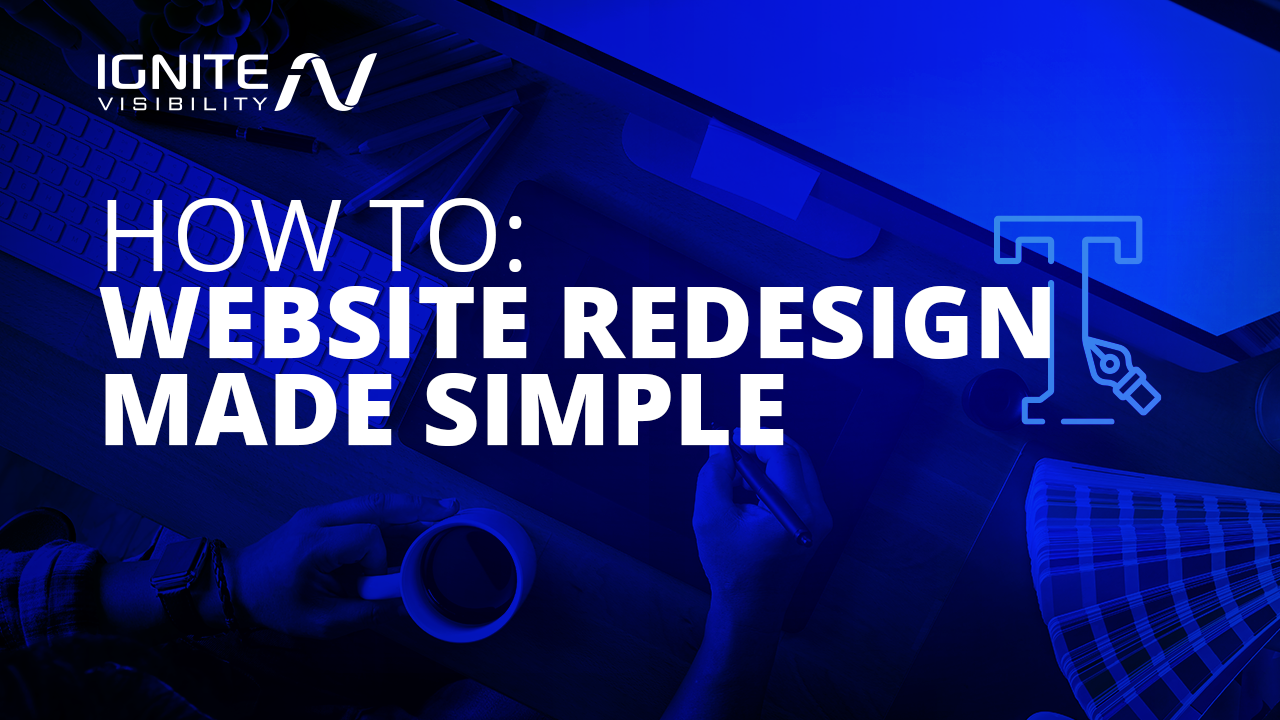Did you know the average website lasts about 1-2 years before a redesign?
There are various reasons you may want to undergo a website redesign. Follow this guide to make sure that you get your redesign plan in place and follow it carefully.
1. Gather Your Current Metrics
The #1 reason for a website redesign is to make something better.
Well, how do you know if your change made things better if you don’t know where things currently stand?
That’s why it’s important to gather your current website metrics.
Use tools like Google Search Console,
Google Analytics, and other third-party services to collect data such as:
- Visits per day, week, and month
- Unique visitors
- Bounce rate
- Dwell time
- Top keywords
- Backlink info
- New leads per month
- Form submissions per month
- Website-generated sales per month
And any other metrics that you think will help you determine if your website revamp gave you a net benefit.
Keep these stats handy. Then, after your new site has been up and running for some time, do a comparison. Find out where things have improved and where they’ve come up short.
Then you can make the necessary adjustments.
2. Set Some Goals
Next, make sure you set some goals for your website redesign.
What are you trying to accomplish? Do you want more visits? Are you looking for
more conversions? Are you in search of more unique visitors? A lower bounce rate?
Just keep in mind: the website redesign isn’t only about how your site
looks. It’s also about what it
accomplishes.
Make sure you lay out what you want your website to accomplish before you begin the redesign. Then, during every phase of the makeover, ask yourself:
“Does this change help meet my goals?”
Also: keep in mind that some goals are dependent on others. For example, if you’re looking to land more sales, you may need more visitors.
3. Define Messaging
Next, get your messaging in place.
How do you want to communicate your
unique value proposition (UVP)? How will you promote the benefits of the products or services you offer?
Make sure that all visitors to your revamped site get a clear understanding of your brand and how your company benefits them within just a few seconds of landing on the home page.
Remember: keep it simple. Don’t use high-tech jargon, industry geek speak, or fancy phrases that people in your target market might not understand. Speak at a Fourth Grade level.
And keep in mind: you might not have to change the messaging at all from the previous version of the site. In some cases, you might just want a redesign with the same messaging.
This is also the part where you think about branding. Decide on a new logo, different colors, and the overall look and feel of your site.
4. Define Buyer Personas
If you’re unfamiliar with personas, they’re fictitious representations of people in your target market.
For example, if you’re selling a digital marketing tool, your different personas might consist of a solo entrepreneur, a head of an
SEO agency, and a freelancer who helps people with digital marketing projects on the side.
It’s important to define them before you redesign your site. That way, you can think about each of your personas and ask:
“How will the new design benefit this persona?”
5. Protect Your Most Valuable Pages
You can redesign your site without changing any
landing page URLs. But maybe you’re going for a massive overhaul that includes a new domain name.
In that case, you’ll want to keep the traffic you’ve already earned to those old pages.
Dive into the relationship between traffic and conversions to find your money pages.
For example, a website redesign focused on lower traffic and higher conversions will have different goals than a website redesign focused on higher traffic with lower conversions.
You can do that with
301 redirects. They’ll forward people who visit the old URLs to the new ones.
Also, make sure your new website ranks for all the search terms that brought traffic to your old site. You can do that by optimizing the new pages for those same keywords.
6. Pick the Right Software
Just because you’re revamping your website, that doesn’t mean you have to go with a whole new content management system (CMS). But sometimes it
does mean that.
In that case, make sure you familiarize yourself with the new platform.
Even better: get some professional help. Simply put: modern-day CMS platforms are just too difficult to master overnight.
You’re going to need somebody with years of experience.
Although the most popular CMS option on the planet (currently) is WordPress, you might not want to go that route. It’s known to perform slowly when you need pages to load in a jiffy.
But that’s something you can weigh against your other priorities.
Wrapping It Up
Now you know how to redesign a website.
If you’re in need of a site overhaul, rebranding, or different messaging, you can follow these steps to make the right changes.
Why not get started with Step 1 today?
About the author:
John Lincoln (MBA) is CEO of Ignite Visibility (a 2017, 2018, 2019 and 2020 Inc. 5000 company) a highly sought-after digital marketing strategist, industry speaker and author of two books, \"The Forecaster Method\" and \"Digital Influencer.\" Over the course of his career, Lincoln has worked with over 1,000 online businesses ranging from small startups to amazing clients such as Office Depot, Tony Robbins, Morgan Stanley, Fox, USA Today, COX and The Knot World Wide. John Lincoln is the editor of the Ignite Visibility blog. While he is a contributor, he does not write all of the articles and in many cases he is supported to ensure timely content.

